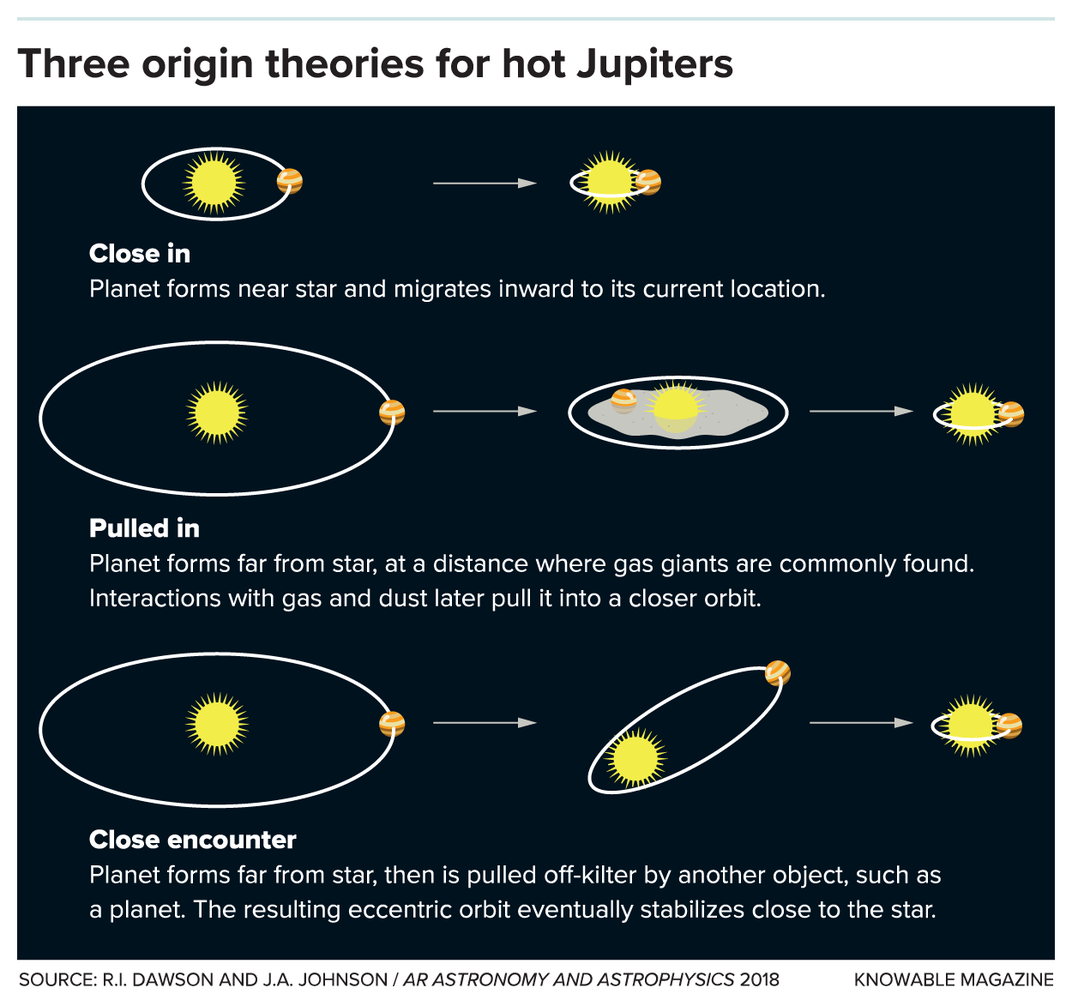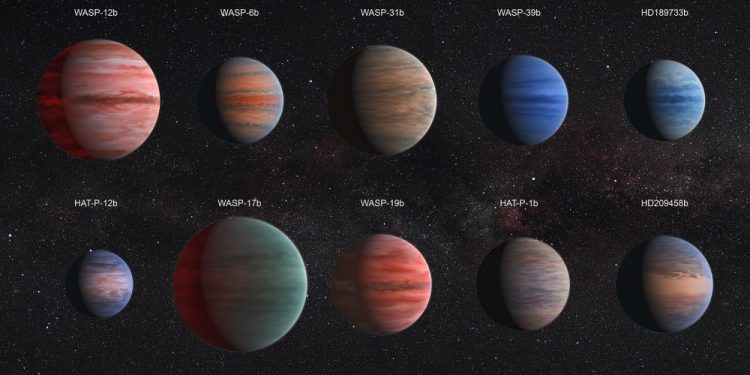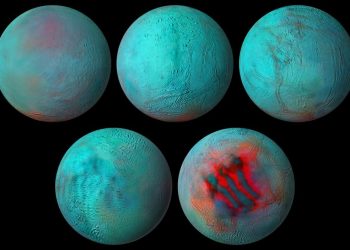Before the discovery of Hot Jupiters, no scientist had imagined that such exoplanets could exist. Judging by their given name itself, you probably already get the general idea of what these planets are – similar in size to Jupiter but with atmospheric conditions that are much more extreme.
Hot Jupiters are perhaps the most curious kind of exoplanets discovered to date. Finding a planet of this type was a complete surprise decades ago as nobody had considered that exoplanets could form in the way Hot Jupiters do.

1. Hot Jupiters are giant exoplanets similar in size to Jupiter, whose orbit is so close to a star that their atmosphere can reach temperatures of 1000-3000 degrees Celsius.
2. There are three main theories about the origin of this type of exoplanets. The first one suggests that they might actually form in such close orbits to their stars while the opposite theory considers the option that they could form farther but migrate closer and closer to their stars. The third version also includes formation far from the star and migration in a later stage, this time influenced by interaction with another celestial object.
3. Hot Jupiters do not exist for too long, since their atmosphere is blown away by the powerful stellar winds. When their gas shell is completely blown away, in its place remains a small iron-stone planet.
4. It is widely accepted that an exoplanet can be considered a Hot Jupiter as long as it doesn’t have a mass beyond 13.6 Jupiter masses. Anything beyond would be classified as a brown dwarf which means that it is in the middle between a supermassive gas giant and the smallest stars in terms of mass.
5. Most Hot Jupiters have extremely short orbital periods. In most cases, we would be speaking about a year that spans just a few days. There are those whose orbital periods last several months but most Hot Jupiters generally complete a single orbit in less than 10 days.
6. Scientists believe that most Hot Jupiters have days and years with identical lengths. This means that a day takes just as long as one orbital period. This is why it is generally accepted that Hot Jupiters have one side always facing the star.
7. Hot Jupiters are “lonely” planets. What this means is that in most cases, there are no other smaller planets in planetary systems that host a Hot Jupiter. Scientists are not particularly certain why but there is a theory that Hot Jupiters simply wipe out all smaller planets that come in their way. And yet, there are planetary systems with both Hot Jupiters and smaller planets, so scientists truly do not have an explanation at this point.
8. Most Hot Jupiters exist around stars that are richer in metals. There is a theory that the abundance of iron and other heavy elements could influence the formation of such giant planets.
9. Hot Jupiters are the easiest type of exoplanets to detect and observe which is why we often hear about them more than, for example, Super-Earths or Neptune-sized exoplanets.
10. A few days ago, scientists revealed the latest major discovery of a Hot Jupiter with unique properties. Although originally discovered in 2012, it took years before scientists studied the atmosphere of WASP-62b. Now, it is the first Hot Jupiter that does not have clouds or haze in its atmosphere. Such exoplanets are so rare that the first cloudless one was discovered in 2018 (but it was not a Hot Jupiter). This new unique exoplanet could give scientists a better chance of studying the formation of Hot Jupiters.
Join the discussion and participate in awesome giveaways in our mobile Telegram group. Join Curiosmos on Telegram Today. t.me/Curiosmos
Sources:
• Dawson, R., & Johnson, J. (2018, January 18). Origins of Hot Jupiters.
• Hot Jupiter – Wikipedia. (2021, January 06).
• Sutter, P. (2016, February 22). Extremely Hot and Incredibly Close: How Hot Jupiters Defy Theory.
• Wenz, J. (2019, October 11). What Astronomers Can Learn From Hot Jupiters, the Scorching Giant Planets of the Galaxy.
• Whitehead, N. (2021, January 22). Astronomers discover first cloudless, Jupiter-like planet.
• Williams, M. (2020, June 29). Do Hot Jupiters Form Close in, or Do They Migrate? A Newly-Discovered Planet Might Help Answer This.
• Wit, J. D. (n.d.). DIRECT MEASURE OF RADIATIVE AND DYNAMICAL PROPERTIES OF AN EXOPLANET ATMOSPHERE.











